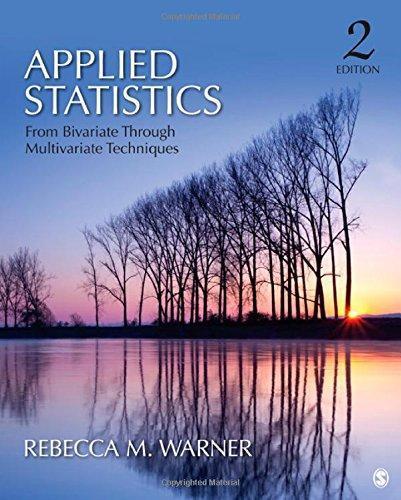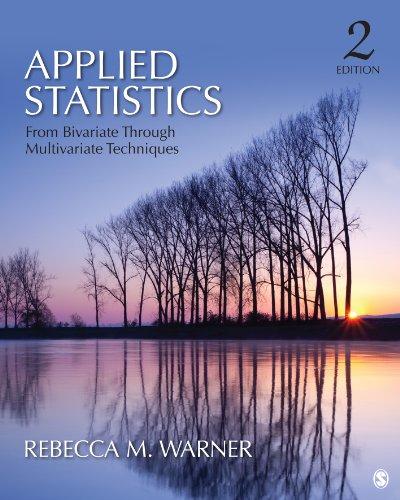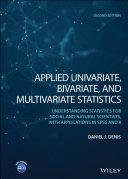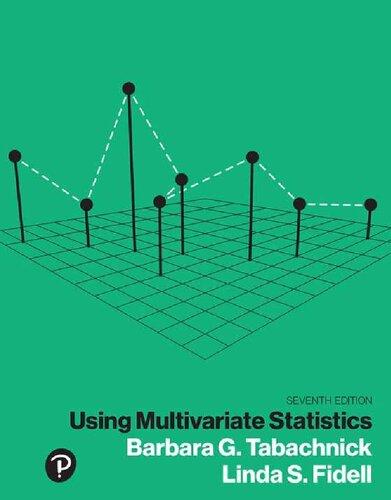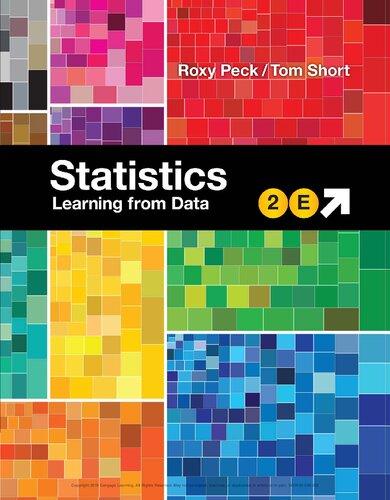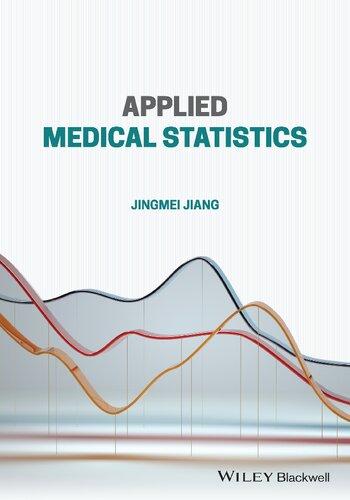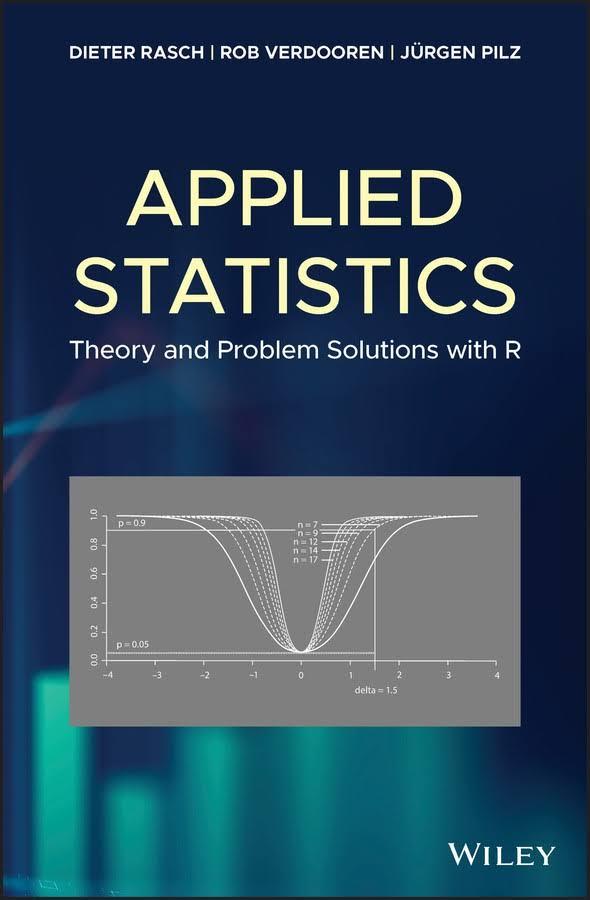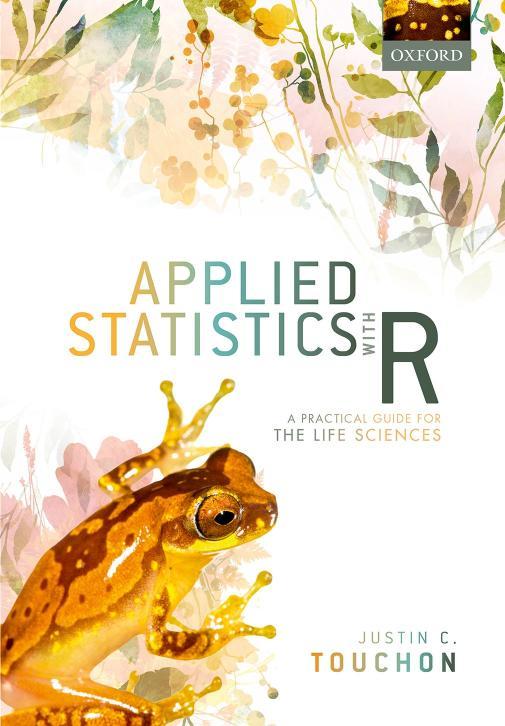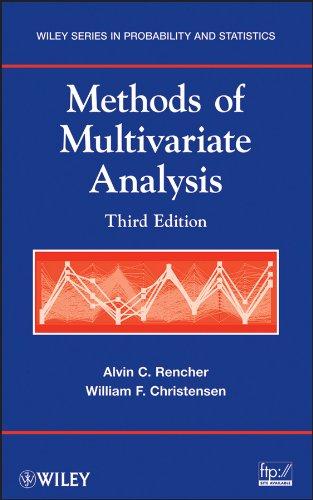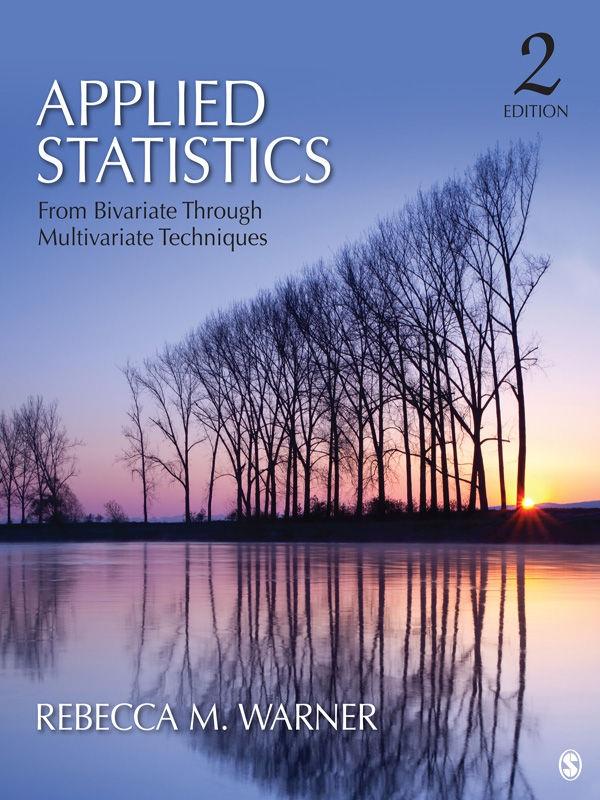DETAILEDCONTENTS
Chapter1.ReviewofBasicConcepts
1.1Introduction
12ASimpleExampleofaResearchProblem
1.3DiscrepanciesBetweenRealandIdealResearchSituations
1.4SamplesandPopulations
15DescriptiveVersusInferentialUsesofStatistics
1.6LevelsofMeasurementandTypesofVariables
1.7TheNormalDistribution
18ResearchDesign
181ExperimentalDesign
1.8.2Quasi-ExperimentalDesign
183NonexperimentalResearchDesign
184Between-SubjectsVersusWithin-SubjectsorRepeatedMeasures
1.9CombinationsofTheseDesignElements
110ParametricVersusNonparametricStatistics
111AdditionalImplicitAssumptions
1.12SelectionofanAppropriateBivariateAnalysis
113Summary ComprehensionQuestions
Chapter2.BasicStatistics,SamplingError,andConfidenceIntervals
21Introduction
22ResearchExample:DescriptionofaSampleofHRScores
2.3SampleMean(M)
24SumofSquaredDeviations(SS)andSampleVariance(s2)
25DegreesofFreedom(df)foraSampleVariance
2.6WhyIsThereVariance?
27SampleStandardDeviation(s)
28AssessmentofLocationofaSingleXScoreRelativetoaDistributionofScores
2.9AShiftinLevelofAnalysis:TheDistributionofValuesofMAcrossManySamplesFromtheSame Population
2.10AnIndexofAmountofSamplingError:TheStandardErroroftheMean(σM)
2.11EffectofSampleSize(N)ontheMagnitudeoftheStandardError(σM)
212SampleEstimateoftheStandardErroroftheMean(SEM)
2.13TheFamilyoftDistributions
2.14ConfidenceIntervals
2141TheGeneralFormofaCI
2.14.2SettingUpaCIforMWhenσIsKnown
2.14.3SettingUpaCIforMWhentheValueofσIsNotKnown
2144ReportingCIs
2.15Summary
AppendixonSPSS
ComprehensionQuestions
Chapter3.StatisticalSignificanceTesting
3.1TheLogicofNullHypothesisSignificanceTesting(NHST)
32TypeIVersusTypeIIError
33FormalNHSTProcedures:ThezTestforaNullHypothesisAboutOnePopulationMean
3.3.1ObtainingaRandomSampleFromthePopulationofInterest
332FormulatingaNullHypothesis(H0)fortheOne-SamplezTest
333FormulatinganAlternativeHypothesis(H1)
3.3.4ChoosingaNominalAlphaLevel
335DeterminingtheRangeofzScoresUsedtoRejectH0
336DeterminingtheRangeofValuesofMUsedtoRejectH0
3.3.7Reportingan“Exact”pValue
34CommonResearchPracticesInconsistentWithAssumptionsandRulesforNHST
341UseofConvenienceSamples
3.4.2ModificationofDecisionRulesAftertheInitialDecision
343ConductingLargeNumbersofSignificanceTests
344ImpactofViolationsofAssumptionsonRiskofTypeIError
3.5StrategiestoLimitRiskofTypeIError
351UseofRandomandRepresentativeSamples
352AdherencetotheRulesforNHST
3.5.3LimittheNumberofSignificanceTests
354Bonferroni-CorrectedPer-ComparisonAlphaLevels
355ReplicationofOutcomeinNewSamples
3.5.6Cross-Validation
36InterpretationofResults
361InterpretationofNullResults
3.6.2InterpretationofStatisticallySignificantResults
37WhenIsatTestUsedInsteadofazTest?
3.8EffectSize
3.8.1Evaluationof“Practical”(vs.Statistical)Significance
382FormalEffect-SizeIndex:Cohen’sd
3.9StatisticalPowerAnalysis
3.10NumericalResultsforaOne-SampletTestObtainedFromSPSS
311GuidelinesforReportingResults
3.12Summary
3.12.1LogicalProblemsWithNHST
3122OtherApplicationsofthetRatio
3.12.3WhatDoesItMeantoSay“p<.05”?
ComprehensionQuestions
Chapter4 PreliminaryDataScreening
41Introduction:ProblemsinRealData
4.2QualityControlDuringDataCollection
43ExampleofanSPSSDataWorksheet
44IdentificationofErrorsandInconsistencies
4.5MissingValues
46EmpiricalExampleofDataScreeningforIndividualVariables
461FrequencyDistributionTables
4.6.2RemovalofImpossibleorExtremeScores
463BarChartforaCategoricalVariable
464HistogramforaQuantitativeVariable
4.7IdentificationandHandlingofOutliers
48ScreeningDataforBivariateAnalyses
481BivariateDataScreeningforTwoCategoricalVariables
4.8.2BivariateDataScreeningforOneCategoricalandOneQuantitativeVariable
483BivariateDataScreeningforTwoQuantitativeVariables
49NonlinearRelations
4.10DataTransformations
411VerifyingThatRemediesHadtheDesiredEffects
412MultivariateDataScreening
4.13ReportingPreliminaryDataScreening
414SummaryandChecklistforDataScreening
415FinalNotes
ComprehensionQuestions
Chapter5.ComparingGroupMeansUsingtheIndependentSamplestTest
51ResearchSituationsWheretheIndependentSamplestTestIsUsed
5.2AHypotheticalResearchExample
53AssumptionsAbouttheDistributionofScoresontheQuantitativeDependentVariable
5.3.1Quantitative,ApproximatelyNormallyDistributed
5.3.2EqualVariancesofScoresAcrossGroups(theHomogeneityofVarianceAssumption)
533IndependentObservationsBothBetweenandWithinGroups
5.3.4RobustnesstoViolationsofAssumptions
5.4PreliminaryDataScreening
55IssuesinDesigningaStudy
5.6FormulasfortheIndependentSamplestTest
5.6.1ThePooledVariancestTest
562ComputationoftheSeparateVariancestTestandItsAdjusteddf
5.6.3EvaluationofStatisticalSignificanceofatRatio
5.6.4ConfidenceIntervalAroundM1 –M2
57ConceptualBasis:FactorsThatAffecttheSizeofthetRatio
5.7.1DesignDecisionsThatAffecttheDifferenceBetweenGroupMeans,M1 –M2
5.7.2DesignDecisionsThatAffectPooledWithin-GroupVariance,s2 p
573DesignDecisionsAboutSampleSizes,n1 andn2
574Summary:FactorsThatInfluencetheSizeoft
5.8Effect-SizeIndexesfort
581EtaSquared(η2)
582Cohen’sd
5.8.3PointBiserialr(rpb)
59StatisticalPowerandDecisionsAboutSampleSizefortheIndependentSamplestTest
510DescribingtheNatureoftheOutcome
5.11SPSSOutputandModelResultsSection
512Summary ComprehensionQuestions
Chapter6.One-WayBetween-SubjectsAnalysisofVariance
61ResearchSituationsWhereOne-WayBetween-SubjectsAnalysisofVariance(ANOVA)IsUsed
62HypotheticalResearchExample
6.3AssumptionsAboutScoresontheDependentVariableforOne-WayBetween-SANOVA
64IssuesinPlanningaStudy
65DataScreening
6.6PartitionofScoresIntoComponents
67ComputationsfortheOne-WayBetween-SANOVA
671ComparisonBetweentheIndependentSamplestTestandOne-WayBetween-SANOVA
6.7.2SummarizingInformationAboutDistancesBetweenGroupMeans:ComputingMSbetween 673SummarizingInformationAboutVariabilityofScoresWithinGroups:ComputingMSwithin 674TheFRatio:ComparingMSbetween WithMSwithin
6.7.5PatternsofScoresRelatedtotheMagnitudesofMSbetween andMSwithin 676ExpectedValueofFWhenH0 IsTrue
6.7.7ConfidenceIntervals(CIs)forGroupMeans
6.8Effect-SizeIndexforOne-WayBetween-SANOVA
69StatisticalPowerAnalysisforOne-WayBetween-SANOVA
6.10NatureofDifferencesAmongGroupMeans
6.10.1PlannedContrasts
6102PostHocor“Protected”Tests
6.11SPSSOutputandModelResults
6.12Summary
ComprehensionQuestions
Chapter7.BivariatePearsonCorrelation
7.1ResearchSituationsWherePearson’srIsUsed
72HypotheticalResearchExample
73AssumptionsforPearson’sr
7.4PreliminaryDataScreening
75DesignIssuesinPlanningCorrelationResearch
76ComputationofPearson’sr
7.7StatisticalSignificanceTestsforPearson’sr
771TestingtheHypothesisThatρXY =0
772TestingOtherHypothesesAboutρXY
7.7.3AssessingDifferencesBetweenCorrelations
774ReportingManyCorrelations:NeedtoControlInflatedRiskofTypeIError
7741LimitingtheNumberofCorrelations
7.7.4.2Cross-ValidationofCorrelations
7743BonferroniProcedure:AMoreConservativeAlphaLevelforTestsofIndividualCorrelations
78SettingUpCIsforCorrelations
7.9FactorsThatInfluencetheMagnitudeandSignofPearson’sr
791PatternofDataPointsintheX,YScatterPlot
792BiasedSampleSelection:RestrictedRangeorExtremeGroups
7.9.3CorrelationsforSamplesThatCombineGroups
794ControlofExtraneousVariables
795DisproportionateInfluencebyBivariateOutliers
7.9.6ShapesofDistributionsofXandY
797CurvilinearRelations
798TransformationsofData
7.9.9AttenuationofCorrelationDuetoUnreliabilityofMeasurement
7910Part-WholeCorrelations
7911AggregatedData
710Pearson’srandr2 asEffect-SizeIndexes
7.11StatisticalPowerandSampleSizeforCorrelationStudies
712InterpretationofOutcomesforPearson’sr
7121“CorrelationDoesNotNecessarilyImplyCausation”(SoWhatDoesItImply?)
7.12.2InterpretationofSignificantPearson’srValues
7123InterpretationofaNonsignificantPearson’srValue
713SPSSOutputandModelResultsWrite-Up
7.14Summary
ComprehensionQuestions
Chapter8.AlternativeCorrelationCoefficients
8.1CorrelationsforDifferentTypesofVariables
82TwoResearchExamples
83CorrelationsforRankorOrdinalScores
8.4CorrelationsforTrueDichotomies
841PointBiserialr(rpb)
842PhiCoefficient(ϕ)
8.5CorrelationsforArtificiallyDichotomizedVariables
851Biserialr(rb)
852Tetrachoricr(rtet)
8.6AssumptionsandDataScreeningforDichotomousVariables
87AnalysisofData:DogOwnershipandSurvivalAfteraHeartAttack
88Chi-SquareTestofAssociation(ComputationalMethodsforTablesofAnySize)
8.9OtherMeasuresofAssociationforContingencyTables
810SPSSOutputandModelResultsWrite-Up
811Summary
ComprehensionQuestions
Chapter9.BivariateRegression
91ResearchSituationsWhereBivariateRegressionIsUsed
92AResearchExample:PredictionofSalaryFromYearsofJobExperience
9.3AssumptionsandDataScreening
94IssuesinPlanningaBivariateRegressionStudy
95FormulasforBivariateRegression
9.6StatisticalSignificanceTestsforBivariateRegression
97SettingUpConfidenceIntervalsAroundRegressionCoefficients
98FactorsThatInfluencetheMagnitudeandSignofb
9.8.1FactorsThatAffecttheSizeofthebCoefficient
982ComparisonofCoefficientsforDifferentPredictorsorforDifferentGroups
99EffectSize/PartitionofVarianceinBivariateRegression
9.10StatisticalPower
911RawScoreVersusStandardScoreVersionsoftheRegressionEquation
9.12RemovingtheInfluenceofXFromtheYVariablebyLookingatResidualsFromBivariateRegression
9.13EmpiricalExampleUsingSPSS
9131InformationtoReportFromaBivariateRegression
9.14Summary ComprehensionQuestions
Chapter10 AddingaThirdVariable:PreliminaryExploratoryAnalyses
101Three-VariableResearchSituations
10.2FirstResearchExample
103ExploratoryStatisticalAnalysesforThree-VariableResearchSituations
104SeparateAnalysisoftheX1,YRelationshipforEachLeveloftheControlVariableX2
10.5PartialCorrelationBetweenX1 andY,ControllingforX2
106UnderstandingPartialCorrelationastheUseofBivariateRegressiontoRemoveVariancePredictable byX2 FromBothX1 andY
10.7ComputationofPartialrFromBivariatePearsonCorrelations
108IntuitiveApproachtoUnderstandingPartialr
109SignificanceTests,ConfidenceIntervals,andStatisticalPowerforPartialCorrelations
10.9.1StatisticalSignificanceofPartialr
1092ConfidenceIntervalsforPartialr
1093EffectSize,StatisticalPower,andSampleSizeGuidelinesforPartialr
10.10InterpretationofVariousOutcomesforrY1.2 andrY1
1011Two-VariableCausalModels
1012Three-VariableModels:SomePossiblePatternsofAssociationAmongX1,Y,andX2
10.12.1X1 andYAreNotRelatedWhetherYouControlforX2 orNot
10122X2 IsIrrelevanttotheX1,YRelationship
10123WhenYouControlforX2,theX1,YCorrelationDropsto0orCloseto0
10.12.3.1CompletelySpuriousCorrelation
101232CompletelyMediatedAssociationBetweenX1 andY
10124WhenYouControlforX,theCorrelationBetweenX2 andY1 BecomesSmaller(butDoesNot Dropto0andDoesNotChangeSign)
101241X2 PartlyAccountsfortheX1,YAssociation,orX1 andX2 AreCorrelatedPredictorsofY
101242X2 PartlyMediatestheX1,YRelationship
10.12.5Suppression:WhenYouControlforX2,theX1,YCorrelationBecomesLargerThanr1Y or BecomesOppositeinSignRelativetor1Y
101251SuppressionofErrorVarianceinaPredictorVariable
10.12.5.2SignofX1 asaPredictorofYReversesWhenControllingforX2
101253PredictorVariablesWithOppositeSigns
10126“NoneoftheAbove”
10.13MediationVersusModeration
10131PreliminaryAnalysistoIdentifyPossibleModeration
10.13.2PreliminaryAnalysistoDetectPossibleMediation
10.13.3ExperimentalTestsforMediationModels
1014ModelResults
10.15Summary
ComprehensionQuestions
Chapter11 MultipleRegressionWithTwoPredictorVariables
111ResearchSituationsInvolvingRegressionWithTwoPredictorVariables
11.2HypotheticalResearchExample
113GraphicRepresentationofRegressionPlane
114Semipartial(or“Part”)Correlation
11.5GraphicRepresentationofPartitionofVarianceinRegressionWithTwoPredictors
116AssumptionsforRegressionWithTwoPredictors
117FormulasforRegressionCoefficients,SignificanceTests,andConfidenceIntervals
11.7.1FormulasforStandardScoreBetaCoefficients
1172FormulasforRawScore(b)Coefficients
1173FormulaforMultipleRandMultipleR2
11.7.4TestofSignificanceforOverallRegression:OverallFTestforH0:R=0
1175TestofSignificanceforEachIndividualPredictor:tTestforH0:bi =0
1176ConfidenceIntervalforEachbSlopeCoefficient
11.8SPSSRegressionResults
119ConceptualBasis:FactorsThatAffecttheMagnitudeandSignofβandbCoefficientsinMultiple RegressionWithTwoPredictors
11.10TracingRulesforCausalModelPathDiagrams
1111ComparisonofEquationsforβ,b,pr,andsr
1112NatureofPredictiveRelationships
11.13Effect-SizeInformationinRegressionWithTwoPredictors
11131EffectSizeforOverallModel
11132EffectSizeforIndividualPredictorVariables
11.14StatisticalPower
1115IssuesinPlanningaStudy
11151SampleSize
11.15.2SelectionofPredictorVariables
11153MulticollinearityAmongPredictors
11154RangeofScores
11.16Results
1117Summary
ComprehensionQuestions
Chapter12.DummyPredictorVariablesinMultipleRegression
121ResearchSituationsWhereDummyPredictorVariablesCanBeUsed
12.2EmpiricalExample
12.3ScreeningforViolationsofAssumptions
124IssuesinPlanningaStudy
12.5ParameterEstimatesandSignificanceTestsforRegressionsWithDummyVariables
12.6GroupMeanComparisonsUsingOne-WayBetween-SANOVA
1261GenderDifferencesinMeanSalary
12.6.2CollegeDifferencesinMeanSalary
12.7ThreeMethodsofCodingforDummyVariables
1271RegressionWithDummy-CodedDummyPredictorVariables
12.7.1.1Two-GroupExampleWithaDummy-CodedDummyVariable
12.7.1.2Multiple-GroupExampleWithDummy-CodedDummyVariables
1272RegressionWithEffect-CodedDummyPredictorVariables
12.7.2.1Two-GroupExampleWithanEffect-CodedDummyVariable
12.7.2.2Multiple-GroupExampleWithEffect-CodedDummyVariables
1273OrthogonalCodingofDummyPredictorVariables
128RegressionModelsThatIncludeBothDummyandQuantitativePredictorVariables
12.9EffectSizeandStatisticalPower
1210NatureoftheRelationshipand/orFollow-UpTests
1211Results
12.12Summary
ComprehensionQuestions
Chapter13.FactorialAnalysisofVariance
13.1ResearchSituationsandResearchQuestions
1311FirstNullHypothesis:TestofMainEffectforFactorA
1312SecondNullHypothesis:TestofMainEffectforFactorB
13.1.3ThirdNullHypothesis:TestoftheA×BInteraction
132ScreeningforViolationsofAssumptions
133IssuesinPlanningaStudy
13.4EmpiricalExample:DescriptionofHypotheticalData
135ComputationsforBetween-SFactorialANOVA
1351NotationforSampleStatisticsThatEstimateScoreComponentsinFactorialANOVA
13.5.2NotationforTheoreticalEffectTerms(orUnknownPopulationParameters)inFactorialANOVA
1353FormulasforSumsofSquaresandDegreesofFreedom
136ConceptualBasis:FactorsThatAffecttheSizeofSumsofSquaresandFRatiosinFactorialANOVA
13.6.1DistancesBetweenGroupMeans(MagnitudeoftheαandβEffects)
1362NumberofScores(n)WithinEachGrouporCell
1363VariabilityofScoresWithinGroupsorCells(MagnitudeofMSwithin)
13.7Effect-SizeEstimatesforFactorialANOVA
138StatisticalPower
13.9NatureoftheRelationships,Follow-UpTests,andInformationtoIncludeintheResults
13.9.1NatureofaTwo-WayInteraction
1392NatureofMainEffectDifferences
13.10FactorialANOVAUsingtheSPSSGLMProcedure
13.10.1FurtherDiscussionofResults:ComparisonoftheFactorialANOVA(inFigures13.7and13.8) WiththeOne-WayANOVA(inFigure131)
13.11Summary
Appendix:NonorthogonalFactorialANOVA(ANOVAWithUnbalancedNumbersofCasesintheCells orGroups)
ComprehensionQuestions
Chapter14.MultipleRegressionWithMoreThanTwoPredictors
141ResearchQuestions
142EmpiricalExample
14.3ScreeningforViolationsofAssumptions
144IssuesinPlanningaStudy
145ComputationofRegressionCoefficientsWithkPredictorVariables
14.6MethodsofEntryforPredictorVariables
1461StandardorSimultaneousMethodofEntry
1462SequentialorHierarchical(User-Determined)MethodofEntry
14.6.3Statistical(Data-Driven)OrderofEntry
147VariancePartitioninginRegressionforStandardorSimultaneousRegressionVersusRegressionsThat InvolveaSeriesofSteps
14.8SignificanceTestforanOverallRegressionModel
149SignificanceTestsforIndividualPredictorsinMultipleRegression
1410EffectSize
14.10.1EffectSizeforOverallRegression(MultipleR)
14102EffectSizesforIndividualPredictorVariables(sr2)
1411ChangesinFandRasAdditionalPredictorsAreAddedtoaModelinSequentialorStatistical Regression
1412StatisticalPower
1413NatureoftheRelationshipBetweenEachXPredictorandY(ControllingforOtherPredictors)
14.14AssessmentofMultivariateOutliersinRegression
1415SPSSExampleandResults
14151SPSSScreenShots,Output,andResultsforStandardRegression
14.15.2SPSSScreenShots,Output,andResultsforSequentialRegression
14153SPSSScreenShots,Output,andResultsforStatisticalRegression
1416Summary
Appendix14.A:AReviewofMatrixAlgebraNotationandOperationsandApplicationofMatrixAlgebra toEstimationofSlopeCoefficientsforRegressionWithMoreThankPredictorVariables
Appendix14.B:TablesfortheWilkinsonandDallal(1981)TestofSignificanceofMultipleR2inMethod =ForwardStatisticalRegression
ComprehensionQuestions
Chapter15.Moderation:TestsforInteractioninMultipleRegression
15.1ModerationVersusMediation
152SituationsinWhichResearchersTestInteractions
1521FactorialANOVADesigns
15.2.2RegressionAnalysesThatIncludeInteractionTerms
153WhenShouldInteractionTermsBeIncludedinRegressionAnalysis?
154TypesofPredictorVariablesIncludedinInteractions
15.4.1InteractionBetweenTwoCategoricalPredictorVariables
1542InteractionBetweenaQuantitativeandaCategoricalPredictorVariable
1543InteractionBetweenTwoQuantitativePredictorVariables
15.5AssumptionsandPreliminaryDataScreening
156IssuesinDesigningaStudy
157SampleSizeandStatisticalPowerinTestsofModerationorInteraction
15.8EffectSizeforInteraction
159AdditionalIssuesinAnalysis
1510PreliminaryExample:OneCategoricalandOneQuantitativePredictorVariableWithNoSignificant Interaction
1511Example1:SignificantInteractionBetweenOneCategoricalandOneQuantitativePredictorVariable
1512GraphingRegressionLinesforSubgroups
15.13InteractionWithaCategoricalPredictorWithMoreThanTwoCategories
1514ResultsSectionforInteractionInvolvingOneCategoricalandOneQuantitativePredictorVariable
1515Example2:InteractionBetweenTwoQuantitativePredictors
15.16ResultsforExample2:InteractionBetweenTwoQuantitativePredictors
1517GraphingtheInteractionforSelectedValuesofTwoQuantitativePredictors
1518ResultsSectionforExample2:InteractionofTwoQuantitativePredictors
15.19AdditionalIssuesandSummary ComprehensionQuestions
Chapter16 Mediation
16.1DefinitionofMediation
16.1.1PathModelNotation
1612CircumstancesWhenMediationMayBeaReasonableHypothesis
16.2AHypotheticalResearchExampleInvolvingOneMediatingVariable
16.3LimitationsofCausalModels
1631ReasonsWhySomePathCoefficientsMayBeNotStatisticallySignificant
16.3.2PossibleInterpretationsforaStatisticallySignificantPath
164QuestionsinaMediationAnalysis
16.5IssuesinDesigningaMediationAnalysisStudy
16.5.1TypeandMeasurementofVariablesinMediationAnalysis
1652TemporalPrecedenceorSequenceofVariablesinMediationStudies
16.5.3TimeLagsBetweenVariables
16.6AssumptionsinMediationAnalysisandPreliminaryDataScreening 167PathCoefficientEstimation
16.8ConceptualIssues:AssessmentofDirectVersusIndirectPaths
16.8.1TheMediatedorIndirectPath:ab
1682MediatedandDirectPathasPartitionofTotalEffect
16.8.3MagnitudeofMediatedEffect
16.9EvaluatingStatisticalSignificance
1691Causal-StepsApproach
16.9.2JointSignificanceTest
16.9.3SobelTestofH0:ab=0
1694BootstrappedConfidenceIntervalforab
1610Effect-SizeInformation
16.11SampleSizeandStatisticalPower
1612AdditionalExamplesofMediationModels
16121TestsofMultipleMediatingVariables
16.12.2Multiple-StepMediatedPaths
16123MediatedModerationandModeratedMediation
1613UseofStructuralEquationModelingProgramstoTestMediationModels
16.13.1ComparisonofRegressionandSEMTestsofMediation
16132StepsinRunningAmos
16133OpeningtheAmosGraphicsProgram
16.13.4AmosTools
16135FirstStepsTowardDrawingandLabelinganAmosPathModel
16136AddingAdditionalVariablesandPathstotheAmosPathDiagram
16.13.7AddingErrorTermsforDependentVariables
16138CorrectingMistakesandPrintingthePathModel
16139OpeningaDataFileFromAmos
16.13.10SpecificationofAnalysisMethodandRequestforOutput
161311RunningtheAmosAnalysisandExaminingPreliminaryResults
161312UnstandardizedPathCoefficientsonPathDiagram
16.13.13ExaminingTextOutputFromAmos
161314LocatingandInterpretingOutputforBootstrappedCIfortheabIndirectEffect
161315WhyUseAmos/SEMRatherThanOLSRegression?
16.14ResultsSection
16.15Summary ComprehensionQuestions
Chapter17.AnalysisofCovariance
17.1ResearchSituationsandResearchQuestions
172EmpiricalExample
173ScreeningforViolationsofAssumptions
17.4VariancePartitioninginANCOVA
175IssuesinPlanningaStudy
176FormulasforANCOVA
17.7ComputationofAdjustedEffectsandAdjustedY*Means
178ConceptualBasis:FactorsThatAffecttheMagnitudeofSSAadj andSSresidual andthePatternof AdjustedGroupMeans
179EffectSize
1710StatisticalPower
17.11NatureoftheRelationshipandFollow-UpTests:InformationtoIncludeintheResultsSection 1712SPSSAnalysisandModelResults
1713AdditionalDiscussionofANCOVAResults
17.14Summary
Appendix:AlternativeMethodsfortheAnalysisofPretest/PosttestData ComprehensionQuestions
Chapter18.DiscriminantAnalysis
18.1ResearchSituationsandResearchQuestions
182IntroductionofanEmpiricalExample
18.3ScreeningforViolationsofAssumptions
18.4IssuesinPlanningaStudy
185EquationsforDiscriminantAnalysis
18.6ConceptualBasis:FactorsThatAffecttheMagnitudeofWilks’sΛ 18.7EffectSize
188StatisticalPowerandSampleSizeRecommendations
18.9Follow-UpTeststoAssessWhatPatternofScoresBestDifferentiatesGroups 18.10Results
1811One-WayANOVAonScoresonDiscriminantFunctions
1812Summary
Appendix:Eigenvalue/EigenvectorProblem ComprehensionQuestions
Chapter19.MultivariateAnalysisofVariance
19.1ResearchSituationsandResearchQuestions
192IntroductionoftheInitialResearchExample:AOne-WayMANOVA
19.3WhyIncludeMultipleOutcomeMeasures?
194EquivalenceofMANOVAandDA
19.5TheGeneralLinearModel
19.6AssumptionsandDataScreening
197IssuesinPlanningaStudy
19.8ConceptualBasisofMANOVAandSomeFormulasforMANOVA
19.9MultivariateTestStatistics
1910FactorsThatInfluencetheMagnitudeofWilks’sΛ
19.11EffectSizeforMANOVA
19.12StatisticalPowerandSampleSizeDecisions
1913SPSSOutputforaOne-WayMANOVA:CareerGroupDataFromChapter18
19.14A2×3FactorialMANOVAoftheCareerGroupData
19.14.1PotentialFollow-UpTeststoAssesstheNatureofSignificantMainEffects
19142PossibleFollow-UpTeststoAssesstheNatureoftheInteraction
19.14.3FurtherDiscussionofProblemsWithThis2×3FactorialMANOVA
19.15ASignificantInteractionina3×6MANOVA
1916ComparisonofUnivariateandMultivariateFollow-UpAnalysesforMANOVA
1917Summary ComprehensionQuestions
Chapter20 PrincipalComponentsandFactorAnalysis
201ResearchSituations
20.2PathModelforFactorAnalysis
203FactorAnalysisasaMethodofDataReduction
204IntroductionofanEmpiricalExample
20.5ScreeningforViolationsofAssumptions
206IssuesinPlanningaFactor-AnalyticStudy
207ComputationofLoadings
20.8StepsintheComputationofPrincipalComponentsorFactorAnalysis
2081ComputationoftheCorrelationMatrixR
2082ComputationoftheInitialLoadingMatrixA
20.8.3LimitingtheNumberofComponentsorFactors
2084RotationofFactors
2085NamingorLabelingComponentsorFactors
20.9Analysis1:PrincipalComponentsAnalysisofThreeItemsRetainingAllThreeComponents
2091CommunalityforEachItemBasedonAllThreeComponents
2092VarianceReproducedbyEachoftheThreeComponents
20.9.3ReproductionofCorrelationsFromLoadingsonAllThreeComponents
2010Analysis2:PrincipalComponentAnalysisofThreeItemsRetainingOnlytheFirstComponent
20101CommunalityforEachItemBasedonOneComponent
20.10.2VarianceReproducedbytheFirstComponent
20103PartialReproductionofCorrelationsFromLoadingsonOnlyOneComponent
20.11PrincipalComponentsVersusPrincipalAxisFactoring
20.12Analysis3:PAFofNineItems,TwoFactorsRetained,NoRotation 20121CommunalityforEachItemBasedonTwoRetainedFactors
20.12.2VarianceReproducedbyTwoRetainedFactors
20.12.3PartialReproductionofCorrelationsFromLoadingsonOnlyTwoFactors
2013GeometricRepresentationofCorrelationsBetweenVariablesandCorrelationsBetweenComponents orFactors
20.13.1FactorRotation
2014TheTwoSetsofMultipleRegressions
20.14.1ConstructionofFactorScores(SuchasScoreonF1)FromzScores
20.14.2PredictionofStandardScoresonVariables(zxi)FromFactors(F1,F2,…,F9)
2015Analysis4:PAFWithVarimaxRotation
20.15.1VarianceReproducedbyEachFactoratThreeStagesintheAnalysis
20152RotatedFactorLoadings
20153ExampleofaReverse-ScoredItem
20.16QuestionstoAddressintheInterpretationofFactorAnalysis
20161HowManyFactorsorComponentsorLatentVariablesAreNeededtoAccountfor(or Reconstruct)thePatternofCorrelationsAmongtheMeasuredVariables?
20.16.2How“Important”AretheFactorsorComponents?HowMuchVarianceDoesEachFactoror ComponentExplain?
20163What,ifAnything,DotheRetainedFactorsorComponentsMean?CanWeLabelorNameOur Factors?
20164HowAdequatelyDotheRetainedComponentsorFactorsReproducetheStructureintheOriginal Data ThatIs,theCorrelationMatrix?
20.17ResultsSectionforAnalysis4:PAFWithVarimaxRotation
2018FactorScoresVersusUnit-WeightedComposites
2019SummaryofIssuesinFactorAnalysis
20.20Optional:BriefIntroductiontoConceptsinStructuralEquationModeling Appendix:TheMatrixAlgebraofFactorAnalysis ComprehensionQuestions
Chapter21.Reliability,Validity,andMultiple-ItemScales
211AssessmentofMeasurementQuality
2111Reliability
21.1.2Validity 2113Sensitivity
2114Bias
21.2CostandInvasivenessofMeasurements
21.2.1Cost
2122Invasiveness
21.2.3ReactivityofMeasurement
21.3EmpiricalExamplesofReliabilityAssessment 2131DefinitionofReliability
21.3.2Test-RetestReliabilityAssessmentforaQuantitativeVariable
21.3.3InterobserverReliabilityAssessmentforScoresonaCategoricalVariable 214ConceptsFromClassicalMeasurementTheory
21.4.1ReliabilityasPartitionofVariance
21.4.2AttenuationofCorrelationsDuetoUnreliabilityofMeasurement 215UseofMultiple-ItemMeasurestoImproveMeasurementReliability
21.6ComputationofSummatedScales
21.6.1Assumption:AllItemsMeasureSameConstructandAreScoredinSameDirection
2162Initial(Raw)ScoresAssignedtoIndividualResponses
21.6.3VariableNaming,ParticularlyforReverse-WordedQuestions
21.6.4FactorAnalysistoAssessDimensionalityofaSetofItems
2165RecodingScoresforReverse-WordedItems
2166SummingScoresAcrossItemstoComputeTotalScore:HandlingMissingData
21.6.7Sumsof(Unit-Weighted)ItemScoresVersusSavedFactorScores
21671SimpleUnit-WeightedSumofRawScores
21672SimpleUnit-WeightedSumofzScores
21.6.7.3SavedFactorScoresorOtherOptimallyWeightedLinearComposites 21674CorrelationBetweenSumsofItemsVersusFactorScores 21675ChoiceAmongMethodsofScoring
21.7AssessmentofInternalHomogeneityforMultiple-ItemMeasures:Cronbach’sAlphaReliability Coefficient
2171Cronbach’sAlpha:ConceptualBasis
21.7.2EmpiricalExample:Cronbach’sAlphaforFiveSelectedCES-DScaleItems 2173ImprovingCronbach’sAlphabyDroppinga“Poor”Item 2174ImprovingCronbach’sAlphabyIncreasingtheNumberofItems
21.7.5OtherMethodsofReliabilityAssessmentforMultiple-ItemMeasures 21751Split-HalfReliability
21752ParallelFormsReliability
21.8ValidityAssessment
2181ContentandFaceValidity
2182Criterion-OrientedValidity
21.8.2.1ConvergentValidity
21822DiscriminantValidity
21823ConcurrentValidity
21.8.2.4PredictiveValidity
21.8.3ConstructValidity:Summary
219TypicalScaleDevelopmentProcess
21.9.1GeneratingandModifyingthePoolofItemsorMeasures
21.9.2AdministerSurveytoParticipants
2193FactorAnalyzeItemstoAssesstheNumberandNatureofLatentVariablesorConstructs
21.9.4DevelopmentofSummatedScales
21.9.5AssessScaleReliability
2196AssessScaleValidity
21.9.7IterativeProcess
21.9.8CreatetheFinalScale
2110ModernMeasurementTheory
21.11ReportingReliabilityAssessment
21.12Summary
Appendix:TheCES-DScale ComprehensionQuestions
Chapter22.AnalysisofRepeatedMeasures
221Introduction
222EmpiricalExample:ExperimenttoAssessEffectofStressonHeartRate
22.2.1AnalysisofDataFromtheStress/HRStudyasaBetween-SorIndependentSamplesDesign
2222IndependentSamplestTestfortheStress/HRData
2223One-WayBetween-SANOVAfortheStress/HRData
22.3DiscussionofSourcesofWithin-GroupErrorinBetween-SVersusWithin-SData
224TheConceptualBasisforthePairedSamplestTestandOne-WayRepeatedMeasuresANOVA
225ComputationofaPairedSamplestTesttoCompareMeanHRBetweenBaselineandPainConditions
22.6SPSSExample:AnalysisofStress/HRDataUsingaPairedSamplestTest
227ComparisonBetweenIndependentSamplestTestandPairedSamplestTest
228SPSSExample:AnalysisofStress/HRDataUsingaUnivariateOne-WayRepeatedMeasures ANOVA
229UsingtheSPSSGLMProcedureforRepeatedMeasuresANOVA
2210ScreeningforViolationsofAssumptionsinUnivariateRepeatedMeasures
22.11TheGreenhouse-GeisserεandHuynh-FeldtεCorrectionFactors
2212MANOVAApproachtoAnalysisofRepeatedMeasuresData
2213EffectSize
22.14StatisticalPower
2215PlannedContrasts
2216Results
22.17DesignProblemsinRepeatedMeasuresStudies
2218MoreComplexDesigns
2219AlternativeAnalysesforPretestandPosttestScores
22.20Summary
ComprehensionQuestions
Chapter23.BinaryLogisticRegression
23.1ResearchSituations
2311TypesofVariables
2312ResearchQuestions
23.1.3AssumptionsRequiredforLinearRegressionVersusBinaryLogisticRegression
232SimpleEmpiricalExample:DogOwnershipandOddsofDeath
233ConceptualBasisforBinaryLogisticRegressionAnalysis
23.3.1WhyOrdinaryLinearRegressionIsInadequate
2332ModifyingtheMethodofAnalysistoHandleTheseProblems
234DefinitionandInterpretationofOdds
23.5ANewTypeofDependentVariable:TheLogit
236TermsInvolvedinBinaryLogisticRegressionAnalysis
2361EstimationofCoefficientsforaBinaryLogisticRegressionModel
23.6.2AssessmentofOverallGoodnessofFitforaBinaryLogisticRegressionModel
2363AlternativeAssessmentsofOverallGoodnessofFit
2364InformationAboutPredictiveUsefulnessofIndividualPredictorVariables
23.6.5EvaluatingAccuracyofGroupClassification
237AnalysisofDataforFirstEmpiricalExample:DogOwnership/DeathStudy
2371SPSSMenuSelectionsandDialogWindows
23.7.2SPSSOutput
23721NullModel
23722FullModel
23.7.3ResultsfortheDogOwnership/DeathStudy
238IssuesinPlanningandConductingaStudy
2381PreliminaryDataScreening
23.8.2DesignDecisions
2383CodingScoresonBinaryVariables
239MoreComplexModels
23.10BinaryLogisticRegressionforSecondEmpiricalAnalysis:DrugDoseandGenderasPredictorsof OddsofDeath
2311ComparisonofDiscriminantAnalysistoBinaryLogisticRegression
23.12Summary
ComprehensionQuestions
AppendixA:ProportionsofAreaUnderaStandardNormalCurve
AppendixB:CriticalValuesfortDistribution
AppendixC:CriticalValuesofF
AppendixD:CriticalValuesofChi-Square
AppendixE:CriticalValuesofthePearsonCorrelationCoefficient
AppendixF:CriticalValuesoftheStudentizedRangeStatistic
AppendixG:Transformationofr(PearsonCorrelation)toFisherZ
Glossary
References
Index
I
am grateful to the readers of the first edition who provided feedback about errors and made suggestions for improvement; your input has been extremely helpful I have corrected all typographical errors that were noticed in the first edition and added some clarifications based on reader feedback. I welcome communication from teachers, students, and readers; please email me at rmw@unhedu with comments, corrections, or suggestions Instructor and student support materials are available for download from www.sagepub.com/warner2e.
Thefollowingmaterialsareavailableforinstructors:
PowerPointpresentationsthatoutlineissuesineachchapterandincludeallfiguresandtablesfromthe textbook
Answersforallcomprehensionquestionsattheendofeachchapter(instructorsmaywishtousesome ofthesequestionsonexamsoraspartofhomeworkassignments)
Forbothinstructorsandstudents,theseadditionalmaterialsareavailable:
AlldatasetsusedinexamplesinthechapterscanbedownloadedaseitherSPSSorExcelfiles OptionalhandoutsshowhowalloftheanalysesdoneusingSPSSinthebookcanberunusingSAS Version93,includingscreenshots,anddetailsaboutinputandoutputfiles
ChangesintheSecondEdition
AllSPSSscreenshotsandoutputhavebeenupdatedtoIBMSPSSVersion19
Chapter4(datascreening)hasbriefnewsectionsaboutexaminationofthepatterninmissingdata, imputationofmissingvalues,andproblemswithdichotomizingscoresonquantitativevariables
Chapter9(bivariateregression)nowincludesreferencestothediscussionofproblemswithcomparison ofstandardizedregressioncoefficientsacrossgroups.
Chapter10includesanewsectiononinconsistentmediationasonetypeofsuppression.
Chapter13hasnewexamplesusingbargraphswitherrorbarstoreportmeansinfactorialanalysisof variance(ANOVA).
In the first edition, mediation was discussed briefly in Chapters 10 and 11, and moderation/analysis of interaction in regression was introduced in Chapter 12 In the second edition, this material has been moved intoseparatenewchaptersandsubstantiallyexpanded
NewChapter15,Moderation,discussestheanalysisofinteractioninmultipleregression,includinghow togeneratelinegraphstodescribethenatureofinteractionsbetweenquantitativepredictors
NewChapter16,Mediation,providesathoroughandupdateddiscussionoftestsforhypothesesabout mediatedcausalmodels.Thischapterincludescompleteinstructionsonhowtodomediationanalysisif youdonothaveaccesstoastructuralequationmodelingprogram,aswellasanoptionalbrief introductiontotheAmosstructuralequationmodelingprogram,availableasanSPSSadd-on,as anotherwaytotestmediatedmodels.
Becausetwonewchapterswereaddedinthemiddleofthebook,allchaptersfromChapter15 to the end ofthebookhavebeenrenumberedinthesecondedition
Chapter21(Chapter19inthefirstedition)hasanewsectiononthedifferentwaysthatSPSShandles missingscoreswhenformingsummatedscalesusingtheSPSSMeanandSumfunctions
SuggestedWaystoUseThisBook
In a two-semester or full-year course, it may be possible to cover most of the material in this textbook This provides basic coverage of methods for comparisons of means in between and within S designs, as well as an introduction to linear regression. The coverage of path models in Chapter10 and latent variables in Chapter 20providesthebackgroundstudentswillneedtomoveontomoreadvancedtopicssuchasstructuralequation modeling
Several different one-semester courses can be taught using selected chapters (and, of course, students can be referred to chapters that are not covered in class for review as needed) If further coverage is desired (for example, polytomous logistic regression), monographs from the SAGE series “Quantitative Applications in theSocialSciences”areexcellentsupplements.
One-SemesterCourse:ComparisonofGroupMeans
Chapter1:ReviewofBasicConcepts
Chapter2:BasicStatistics,SamplingError,andConfidenceIntervals
Chapter3:StatisticalSignificanceTesting
Chapter4:PreliminaryDataScreening
Chapter5:ComparingGroupMeansUsingtheIndependentSamplestTest
Chapter6:One-WayBetween-SubjectsAnalysisofVariance
Chapter13:FactorialAnalysisofVariance
Chapter17:AnalysisofCovariance
Chapter 19: Multivariate Analysis of Variance (perhaps also Chapter 18, Discriminant Analysis, for follow-upanalyses)
Chapter22:AnalysisofRepeatedMeasures
SAGEmonographssuggestedassupplementsforANOVA:
ExperimentalDesignandAnalysis,byStevenR.BrownandLawrenceE.Melamed MissingData,byPaulD Allison
NonparametricStatistics:AnIntroduction,byJeanD Gibbons
RandomFactorsinANOVA,bySallyJacksonandDaleE.Brashers
One-SemesterCourse:CorrelationandRegression,IncludingMediation/Moderation
Chapter1:ReviewofBasicConcepts
Chapter2:DescriptiveStatistics,SamplingError,andConfidenceIntervals
Chapter3:StatisticalSignificanceTesting
Chapter4:PreliminaryDataScreening
Chapter7:BivariatePearsonCorrelation
(Optional:Chapter8:AlternativeCorrelationCoefficients)
Chapter9:BivariateRegression
Chapter10:AddingaThirdVariable:PreliminaryExploratoryAnalyses
Chapter11:MultipleRegressionWithTwoPredictorVariables
(Optional:Chapter12:DummyPredictorVariablesinMultipleRegression)
Chapter14:MultipleRegressionWithMoreThanTwoPredictors
Chapter15:Moderation:TestsforInteractioninMultipleRegression
Chapter16:Mediation
(Optional:Chapter23:BinaryLogisticRegression)
SAGEmonographssuggestedassupplementsforregressionanalysis:
AppliedLogisticRegressionAnalysis,SecondEdition,byScottMenard
Bootstrapping:ANonparametricApproachtoStatisticalInference, by Christopher Z. Mooney and Robert D Duval
InteractionEffectsinLogisticRegression,byJamesJaccard
LatentGrowthCurveModeling,byKristopherJ.Preacher,AaronL.Wichman,RobertC.MacCallum, andNancyE Briggs
LogisticRegressionModelsforOrdinalResponseVariables,byAnnA O’Connell
LogitandProbit:OrderedandMultinomialModels,byVaniKantBorooah
LogitModeling:PracticalApplications,byAlfredDeMaris
MissingData,byPaulD.Allison
ModernMethodsforRobustRegression,byRobertAndersen
MultilevelModeling,byDouglasA Luke
MultipleandGeneralizedNonparametricRegression,byJohnFox
NonparametricStatistics:AnIntroduction,byJeanD.Gibbons
NonrecursiveModels:Endogeneity,ReciprocalRelationships,andFeedbackLoops, by Pamela Paxton, John R Hipp,andSandraMarquart-Pyatt
RegressionDiagnostics:AnIntroduction,byJohnFox
UnderstandingRegressionAssumptions,byWilliamD.Berry
One-SemesterCourse:DevelopmentofMultiple-ItemScalesandReliability/ValidityAssessment
Chapter1:ReviewofBasicConcepts
Chapter2:DescriptiveStatistics,SamplingError,andConfidenceIntervals
Chapter3:StatisticalSignificanceTesting
Chapter4:PreliminaryDataScreening
Chapter7:BivariatePearsonCorrelation
Chapter8:AlternativeCorrelationCoefficients
Chapter20:PrincipalComponentsandFactorAnalysis
Chapter21:Reliability,Validity,andMultiple-ItemScales
SAGEmonographssuggestedassupplementsformultiple-itemscales/measurement/reliabilityanalysis:
DifferentialItemFunctioning,SecondEdition,byStevenJ OsterlindandHowardT Everson
MissingData,byPaulD Allison
OrdinalItemResponseTheory:MokkenScaleAnalysis,byWijbrandtH vanSchuur
PolytomousItemResponseTheoryModels,byRemoOstiniandMichaelL.Nering
RaschModelsforMeasurement,byDavidAndrich
SummatedRatingScaleConstruction:AnIntroduction,byPaulE Spector
Survey Questions: Handcrafting the Standardized Questionnaire, by Jean M Converse and Stanley Presser
Translating Questionnaires and Other Research Instruments: Problems and Solutions, by Orlando Behling andKennethS Law
OtherSAGEmonographsforuseinanyofthecoursesoutlinedabove:
InternetDataCollection,bySamuelJ.BestandBrianS.Kruege
Meta-Analysis:QuantitativeMethodsforResearchSynthesis,byFredricM.Wolf
OtherRemarks
This book was written to provide a bridge between the many excellent statistics books that already exist at introductoryandadvancedlevels Ihavebeenpersuadedbyyearsofteachingthatmoststudentsdonothavea clear understanding of statistics after their first or second courses The concepts covered in an introductory course include some of the most difficult and controversial issues in statistics, such as level of measurement and null hypothesis significance testing Until students have been introduced to the entire vocabulary and system of thought, it is difficult for them to integrate all these ideas I believe that understanding statistics requires multiple-pass learning. I have included a review of basic topics (such as null hypothesis significance testprocedures)alongwithintroductionstomoreadvancedtopicsinstatistics Studentsneedvaryingamounts ofreviewandclarification;thistextbookisdesignedsothateachstudentcanreviewasmuchbasicmaterialas necessarypriortothestudyofmoreadvancedtopicssuchasmultipleregression.Somestudentsneedareview ofconceptsinvolvedinbivariateanalyses(suchaspartitionofvariance),andmoststudentscanbenefitfroma thorough introduction to statistical control in simple three-variable research situations This textbook differs from many existing textbooks for advanced undergraduate- and beginning graduate-level statistics courses because it includes a review of bivariate methods that clarifies important concepts and a thorough discussion of methods for statistically controlling for a third variable (X2) when assessing the nature and strength of the association between an X1 predictor and a Y outcome variable. Later chapters present verbal explanations of widelyusedmultivariatemethodsappliedtospecificresearchexamples
Writingatextbookrequiresdifficultdecisionsaboutwhattopicstoincludeandwhattoleaveoutandhow to handle topics where there is disagreement among authorities This textbook does not cover nonparametric statistics or complex forms of factorial analysis of variance, nor does it cover all the advanced topics found in more encyclopedic treatments (such as time-series analysis, multilevel modeling, survival analysis, and loglinear models) The topics that are included provide a reasonably complete set of tools for data analysis at the advanced undergraduate or beginning graduate level along with explanations of some of the fundamental concepts that are crucial for further study of statistics. For example, comprehension of structural equation modeling (SEM) requires students to understand path or “causal” models, latent variables, measurement models,andthewayinwhichobservedcorrelations(orvariancesandcovariances)canbereproducedfromthe coefficients in a model. This textbook introduces path models and the tracing rule as a way of understanding linearregressionwithtwopredictorvariables Theexplanationofregressionwithtwopredictorsmakesitclear how estimates of regression slope coefficients are deduced from observed correlations and how observed correlations among variables can be reproduced from the coefficients in a regression model. Explaining regression in this way helps students understand why the slope coefficient for each X predictor variable is context dependent (i.e., the value of the slope coefficient for each X predictor variable changes depending on which other X predictor variables are included in the regression analysis). This explanation also sets the stage for an understanding of more advanced methods, such as SEM, that use model parameters to reconstruct observed variances and covariances I have tried to develop explanations that will serve students well whether they use them only to understand the methods of analysis covered in this textbook or as a basis for further studyofmoreadvancedstatisticalmethods
ACKNOWLEDGMENTS
Writers depend on many other people for intellectual preparation and moral support My understanding of statistics was shaped by several exceptional teachers, including the late Morris de Groot at Carnegie Mellon University, and my dissertation advisers at Harvard, Robert Rosenthal and David Kenny Several of the teachers who have most strongly influenced my thinking are writers I know only through their books and journal articles I want to thank all the authors whose work is cited in the reference list. Authors whose work has greatly influenced my understanding include Jacob and Patricia Cohen, Barbara Tabachnick, Linda Fidell, James Jaccard, Richard Harris, Geoffrey Keppel, and JamesStevens
I wish to thank the University of New Hampshire (UNH) for sabbatical leave time and Mil Duncan, director of the Carsey Institute at UNH, for release time from teaching I also thank my department chair, KenFuld,whogavemelightcommitteeresponsibilitieswhileIwasworkingonthisbook Thesegiftsoftime madethecompletionofthebookpossible.
Special thanks are due to the reviewers who provided exemplary feedback on the first drafts of the chapters:
Forthefirstedition:
DavidJ Armor,GeorgeMasonUniversity
MichaelD.Biderman,UniversityofTennesseeatChattanooga
SusanCashin,UniversityofWisconsin–Milwaukee
RuthChilds,UniversityofToronto
Young-HeeCho,CaliforniaStateUniversity,LongBeach
JenniferDunn,CenterforAssessment
WilliamA.Fredrickson,UniversityofMissouri–KansasCity
RobertHanneman,UniversityofCalifornia,Riverside
AndrewHayes,OhioStateUniversity
LawrenceG Herringer,CaliforniaStateUniversity,Chico
JasonKing,BaylorCollegeofMedicine
PatrickLeung,UniversityofHouston
ScottE.Maxwell,UniversityofNotreDame
W JamesPotter,UniversityofCalifornia,SantaBarbara
KyleL Saunders,ColoradoStateUniversity
JosephStevens,UniversityofOregon
JamesA.Swartz,UniversityofIllinoisatChicago
KeithThiede,UniversityofIllinoisatChicago
Forthesecondedition:
DianeBagwell,UniversityofWestFlorida
GeraldR Busheé,GeorgeMasonUniversity
EvitaG Bynum,UniversityofMarylandEasternShore
RalphCarlson,TheUniversityofTexasPanAmerican
JohnJ.Convey,TheCatholicUniversityofAmerica
KimberlyA Kick,DominicanUniversity
TraceyD Matthews,SpringfieldCollege
HidekiMorooka,FayettevilleStateUniversity
DanielJ.Mundfrom,NewMexicoStateUniversity
ShantaPandey,WashingtonUniversity
BeverlyL Roberts,UniversityofFlorida
JimSchwab,UniversityofTexasatAustin
MichaelT Scoles,UniversityofCentralArkansas
CarlaJ.Thompson,UniversityofWestFlorida
MichaelD Toland,UniversityofKentucky
PaigeL Tompkins,MercerUniversity
Their comments were detailed and constructive I hope that revisions based on their reviews have improved this book substantially. The publishing team at SAGE, including Vicki Knight, Lauren Habib, Kalie Koscielak, Laureen Gleason, and Gillian Dickens, provided extremely helpful advice, support, and
